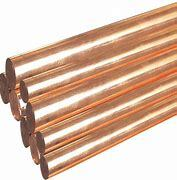1. Introduction
Stripping copper wire might seem simple, but doing it right can mean the difference between a few dollars and a solid payout at the scrap yard. Whether you’re salvaging from old electronics, HVAC systems, or construction waste, clean, bare copper fetches the best price. In this guide, we’ll show you the fastest, safest, and most effective methods to strip copper wire—without burning it, melting it, or wasting your time.

We’ll also touch on related copper products like copper strip, copper rod, and copper tubing, so you know what’s worth saving and how to handle it properly.
2. Why Strip Copper Wire?
Scrap yards pay significantly more for bare bright copper than insulated wire. Burning copper wire for scrap is illegal in many places and releases toxic fumes. Stripping it cleanly preserves the metal’s value and keeps you compliant with environmental and safety regulations.
Plus, stripped copper can be reused in projects like grounding systems (think copper earth rod or copper strip for earthing), electrical bus bars, or even DIY crafts like copper tape for snails in gardens.
3. Tools You’ll Need
- Wire stripper (manual or automatic)
- Utility knife (for thicker cables)
- Heat gun (optional, for stubborn insulation)
- Safety gloves and goggles
- Bucket or bin for sorted copper
For large volumes, consider investing in a motorized copper wire stripper—it’s a game-changer if you’re stripping wire for recycling regularly.
4. Step-by-Step: Best Way to Strip Copper Wire
4.1. Sort Your Wire First

Separate copper wire by type: THHN, Romex, coaxial, or appliance cords. Thin copper strips and copper strip wire are easier to handle than thick industrial cables. Avoid mixing aluminum or other metals—purity matters for pricing.
4.2. Use a Manual Wire Stripper for Small Jobs
For household wiring (like 14–12 gauge), a standard wire stripper works great. Cut a small slit in the insulation, rotate the tool, and pull the sheath off. Keep the copper intact—kinks or cuts reduce value.
4.3. Strip Thick Copper Cable with a Knife or Rotary Stripper
For larger cables (like those from aircon copper pipe wiring or HVAC systems), carefully score the outer jacket with a utility knife. Peel it back, then strip individual conductors. Never cut into the copper—use gentle pressure.
Motorized strippers can handle 10–50mm cables quickly and cleanly, ideal for stripping copper wire for scrap in bulk.
4.4. Avoid Burning or Melting
Burning copper wire for scrap destroys its quality and releases dioxins. It’s also illegal in most U.S. states and EU countries. Stick to mechanical stripping—it’s faster, safer, and more profitable.

5. What to Do with the Stripped Copper
Once stripped, bundle your bare copper by type. Bare bright copper (clean, unoxidized strands) gets top dollar. Tarnished or oxidized pieces still have value but may be priced lower.
You might also encounter copper metal strips, flat copper strip, or even beryllium copper strip from electronics. These can be sold separately—check local scrap yards for copper strip price rates.
If you’re near a supplier, you can even compare copper strip near me listings to see if resale beats scrapping.
6. Related Copper Products Worth Knowing
While stripping wire, you might come across other valuable copper items:
- Copper rod: Often used in welding or grounding. Look for copper rod for welding or copper brazing rod in old machinery.
- Copper earth rod or earthing rod copper: Common in electrical panels. Copper bonded earthing rod and copper clad earth rod are widely used for grounding.
- Copper tubing: From AC units or plumbing. Aircon copper pipe and 15mm copper pipe are recyclable and sometimes reusable.
- Copper bar or copper bus bar: Found in switchgear. Flexible copper bus bar and copper flat bar have high scrap value.
Don’t confuse copper with copper-clad steel. A magnet test helps—real copper isn’t magnetic. Copper bonded steel or copper clad steel ground rod will stick to a magnet; pure copper won’t.
7. Maximizing Your Scrap Value
Clean your copper thoroughly. Remove tape, labels, or solder residue. Avoid mixing with brass, bronze, or nickel-plated copper strip unless your yard accepts alloys.
Track copper prices—copper rod price and copper ingot price fluctuate daily. Selling when markets peak can boost earnings.
Also, never strip live wires. Always disconnect power and verify circuits are dead before handling.
8. Conclusion
Stripping copper wire doesn’t have to be tedious or dangerous. With the right tools and techniques, you can efficiently recover high-value copper while staying safe and eco-friendly. Whether you’re salvaging from old air conditioner copper pipe, electrical panels, or demolition sites, clean stripping pays off—literally.
Remember: the best way to strip copper cable is mechanically, not by burning. Keep your copper pure, sorted, and dry, and you’ll get the best return at any scrap yard.
Our Website founded on October 17, 2012, is a high-tech enterprise committed to the research and development, production, processing, sales and technical services of ceramic relative materials such as How. Our products includes but not limited to Boron Carbide Ceramic Products, Boron Nitride Ceramic Products, Silicon Carbide Ceramic Products, Silicon Nitride Ceramic Products, Zirconium Dioxide Ceramic Products, etc. If you are interested, please feel free to contact us.

